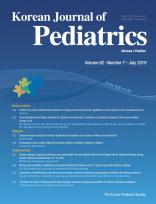Approximately one-third of children with epilepsy continue to experience seizures despite adequate administration of conventional anti-seizure medications [1]. Children with medically refractory epilepsy are greatly affected by cognitive dysfunction, behavioral problems, mental disorders, and overall compromised quality of life [2]. Thus, effective novel therapies are needed in these patients. Over the past two decades, numerous new antiepileptic drugs (AEDs) have been formulated to achieve seizure freedom.
Among the novel AEDs, perampanel (PER) is the first highly selective, noncompetitive antagonist of the AMPA (α-amino-3-hydroxy-5-methyl-4-isoxazolepropionic acid) glutamate receptor. It has been approved for monotherapy or adjunctive treatment of focal seizures, with or without secondarily generalized seizures, and adjunctive treatment of primary generalized tonic-clonic (PGTC) seizures in patients with epilepsy, aged 12 years and older [3]. Clinical efficacy and safety of PER have been established in several randomized controlled trials (randomized controlled trials [RCTs], ≥50% responder rate, 28.5%–37.6% in focal seizures, and 64.2% in PGTC seizures; adverse events of somnolence, dizziness, ataxia, and behavioral changes) [4,5]. Efficacy of PER among the adolescent patients (age 12–17 years, ≥50% responder rate 40.9%–45.0%) is similar to that in adults [4]. Although, PER has been extensively studied in the real-world clinical practice with similar reports of efficacy and safety in RCTs, data on the effects of PER in children and adolescents are relatively scarce [2]. Especially, there is lack of data with respect to the use of PER in children under 12 years.
Yun et al. [6] investigated the efficacy and tolerability of adjunctive PER treatment in children under 12 years of age with refractory epilepsy. A total 22 patients, aged 3.1–11.4 years showed responder rate of 68% (≥50% seizure reduction), wherein 23% showed seizure freedom. Nine patients (41%) experienced at least one adverse event, which was mostly resolved after drug withdrawal or dose adjustment; however, some respiratory depression was retained in bedridden patients. Compared to the previous studies involving the same age group, this report showed better response (responder rate 68% vs. 31%–50%) and similar tolerability (41% vs. 30.6%–60.6%) [7-9].
As per the authors' comments, this report had several important limitations. First, this was a retrospective observational study conducted in a relatively small number of patients over a short follow-up duration. Another possible limitation included the lack of information regarding the titrating schedule, the optimal dosage of PER, and relationship with concomitant enzyme-inducing AEDs. Despite these limitations, this report has great significance, as it was the first to study children younger than 12 years of age in the real-world clinical setting. It can be concluded that PER is effective for the treatment of medically refractory epilepsy in pediatric population with a satisfactory tolerability profile. It is indicated through this report, that the use of PER in the young age group can be effective, if careful attempts are made. This effort is expected to help expand the indications for PER treatment.





 PDF Links
PDF Links PubReader
PubReader ePub Link
ePub Link PubMed
PubMed Download Citation
Download Citation


